Mar
8
2011
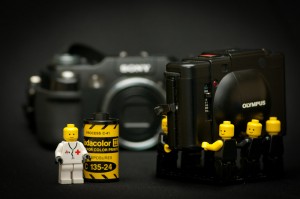
"Wait it's not dead!"
My “advanced compact” camera is getting on in this digital age (six years old) and I’ve been looking at what I will replace it with. Features wise it stands up well against current cameras but the sensor is noisy and the processing is slow. So while comparing the features of the current cameras I started to think about what the equivalent costs would be if I just used film and some of my older cameras. So lets say I choose Kodak Ektar at $7.50 per 36 exposures and pay $3.50 for developing (I do my own scanning) that’s $11.00/36 = 0.30 per image. So if I were to shoot 15 images a week for 52 weeks that’s 780 images times $0.30 is…… drum-roll…… $240 per year. With the current cameras I’ve been looking at costing twice that much I think that it’s actually economical in the short term to continue and even increase my film use. The bonus for me is of course the pleasure I get from using the older cameras.
Of course when I want to do something where getting the image is critical I will still use my DSLR which is gratifying as well.
4 comments | tags: Cameras, Digital, film, Photography | posted in Cameras, Photography, Processing
Jan
29
2011

Despite the fact that Ricoh has overused the “500” moniker I love the uniqueness of this particular camera. The film advance lever is located underneath instead of the more traditional right thumb location. Being entirely a manual camera exposure levels need to be determined with a light meter or other means. Rather that seeing this as detrimental I actually think that this helps the photographer to really consider what they are perceiving. You need to put some conscious effort into the making of the image.
If you look at the bottom of the camera you can see that there are two locks on either side that secure the back and bottom plate to the rest of the camera. The back must be removed for loading and unloading the film. Inside I’ve circled the two cams that interlock in order to advance the film. The bottom one is made from spring steel in such a way that it advances the film one way but slips over the other one when returning the advance lever. When I first received this camera this mechanism was not working but simply bending the spring steel cam by a fraction of a millimeter, so the two cams met, brought it back into operation. Another thing with this camera was that the focus mechanism was frozen. I carefully applied a small amount of constant force be hand until the hardened grease loosened up. Then by turning the focus numerous times the focus became smooth and even, while it is a bit stiff it could be described as nicely dampened. The reason I mention these things is that the first response to a non functioning camera shouldn’t be to rashly disassemble but to spend time with it and figure out what isn’t working and why.

2 comments | tags: 500, Cameras, film, Photography, Ricoh | posted in Cameras, Photography
Jan
20
2011

The Yashica T3 sports a Carl Zeiss T* 35mm f2.8 lens and uniquely a waist level viewfinder labeled an NA scope (New Angle). Using this viewfinder is a great way to compose images while holding the camera in unconventional positions even overhead. You can override the flash but it re-sets after each shot which is an annoyance. But really this camera is all about the lens which is very good.
no comments | tags: Cameras, film, Photography, T3, Yashica | posted in Cameras, Photography
Dec
30
2010

I received my final set of slides back yesterday from Dwayne’s Photo which was the last place on earth still processing Kodachrome. A part of me feels a mournful nostalgia despite the fact that in actuality I had stopped using Kodachrome in any meaningful way years ago. An incredible amount of history was recorded with this film and we can be grateful because it was the most stable early colour film and many 60 year old slides remain unchanged.
no comments | tags: Cameras, film, Kodachrome, Photography | posted in Photography, Processing
Nov
29
2010
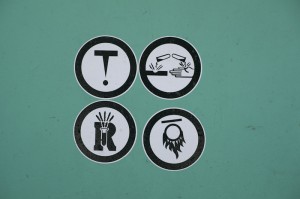 There is a lot of discussion around the light gathering ability of current digital SLR cameras at this time on the Internet. In case you are absorbing this post at some future date I am writing this in 2010 back when cameras could only capture images in murky darkness not inky blackness. Sorry about the fossil fuel thing, who new? Anyway back to the present, so there is all this discussion regarding which brand and which model of camera has the best signal to noise ratio and processing engine in order to make all images look the same no matter what circumstances you decide to take the picture in. Well before such a comparison is no longer possible do to the dwindling availability of a thing called film I though I should provide some perspective. I took some images with Kodak MAX 800 film and took similar pictures with my Pentax K-7 DSLR set at a comparable ISO 800. So when discussing ISO speeds of 12,800 and greater perhaps a small reminder of how much has changed in a few short years is warranted.
There is a lot of discussion around the light gathering ability of current digital SLR cameras at this time on the Internet. In case you are absorbing this post at some future date I am writing this in 2010 back when cameras could only capture images in murky darkness not inky blackness. Sorry about the fossil fuel thing, who new? Anyway back to the present, so there is all this discussion regarding which brand and which model of camera has the best signal to noise ratio and processing engine in order to make all images look the same no matter what circumstances you decide to take the picture in. Well before such a comparison is no longer possible do to the dwindling availability of a thing called film I though I should provide some perspective. I took some images with Kodak MAX 800 film and took similar pictures with my Pentax K-7 DSLR set at a comparable ISO 800. So when discussing ISO speeds of 12,800 and greater perhaps a small reminder of how much has changed in a few short years is warranted.
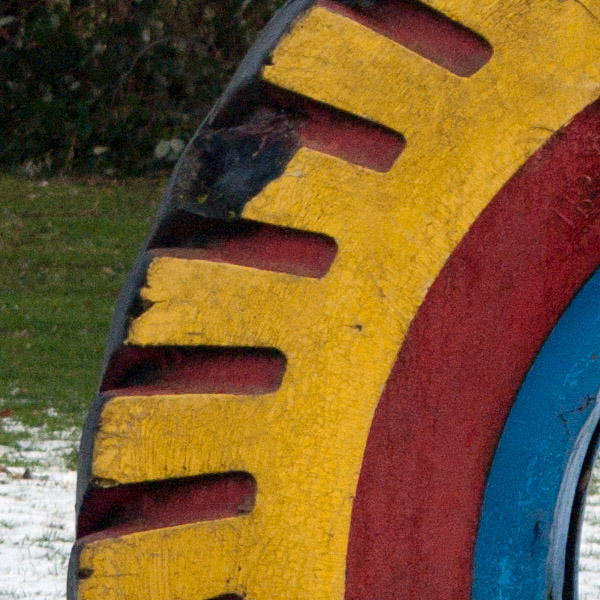 Pentax K-7 ISO 800
Pentax K-7 ISO 800
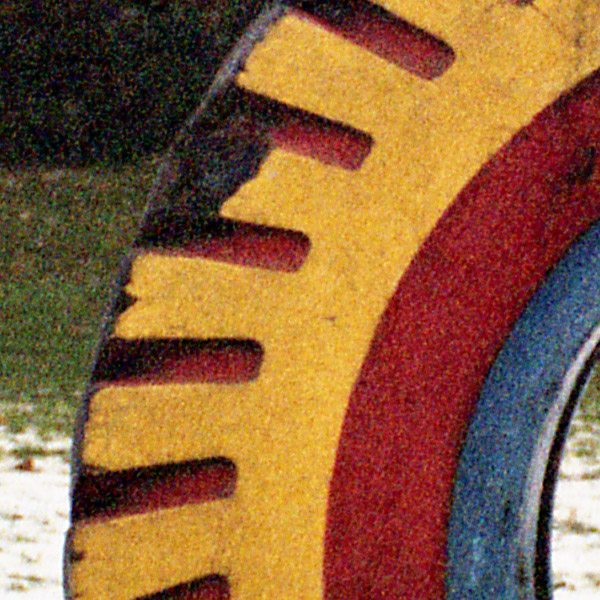
Kodak Max 800 taken with a Pentax ME Super.
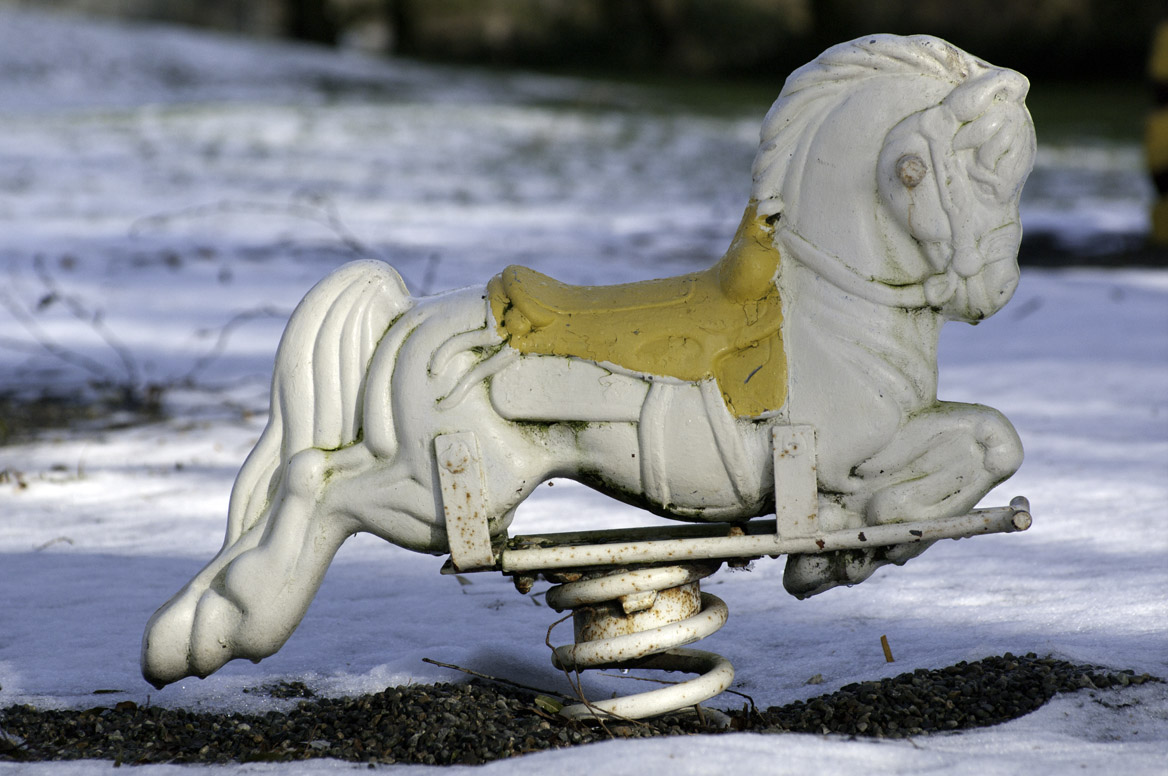 Pentax K-7 ISO 800
Pentax K-7 ISO 800
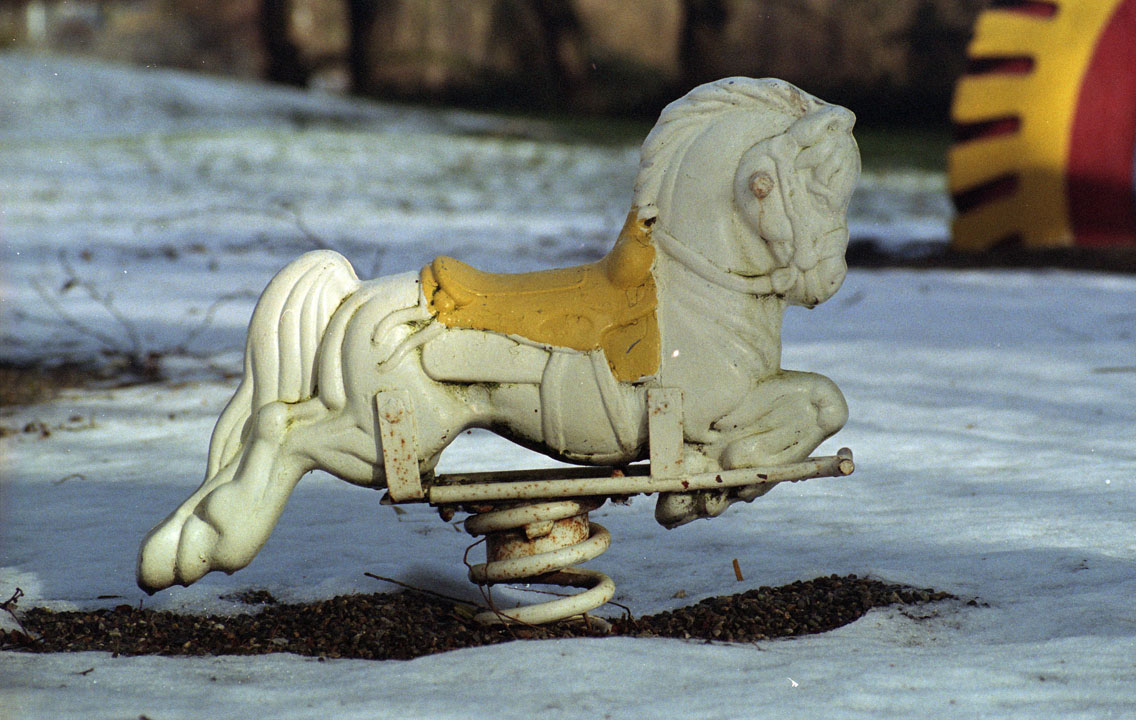 Kodak Max 800 taken with a Pentax ME Super.
Kodak Max 800 taken with a Pentax ME Super.
As an addendum I’m aware that this wasn’t the best possible film to use but it is what I had on hand and I also didn’t do any noise reduction on either the film or the digital files.
no comments | tags: Cameras, exposure, film, ISO, Pentax, Photography | posted in Cameras, Photography, Processing
Nov
28
2010
A few more Minolta X700 shots.



1 comment | tags: camera, Cameras, film, Minolta, Photography, X700 | posted in Cameras, Photography
Nov
23
2010
When you’re out photographing and you notice something interesting the first reaction may be to snap a picture, you wouldn’t be wrong. The next reaction should be how can I make that better. Questions such as camera settings and where should I stand and how will that look need to be thought through. It may come naturally to envision a scene from a different vantage point or it may come from practice. Practice should take the form of thinking about how something will look from somewhere else and then going there and seeing for yourself. Technically you don’t even need a camera it just requires actually thinking about what you are seeing around you. Using a zoom lens gives more options but may actually hinder this type of creativity as it tends to make you stand where you are and try to frame a scene, rather than actively searching.
Here is an example. I saw this scene and took an initial image. I then noticed the curve of the shore and how the fence could make an interesting foreground element. So I left the trail and headed for the beach.
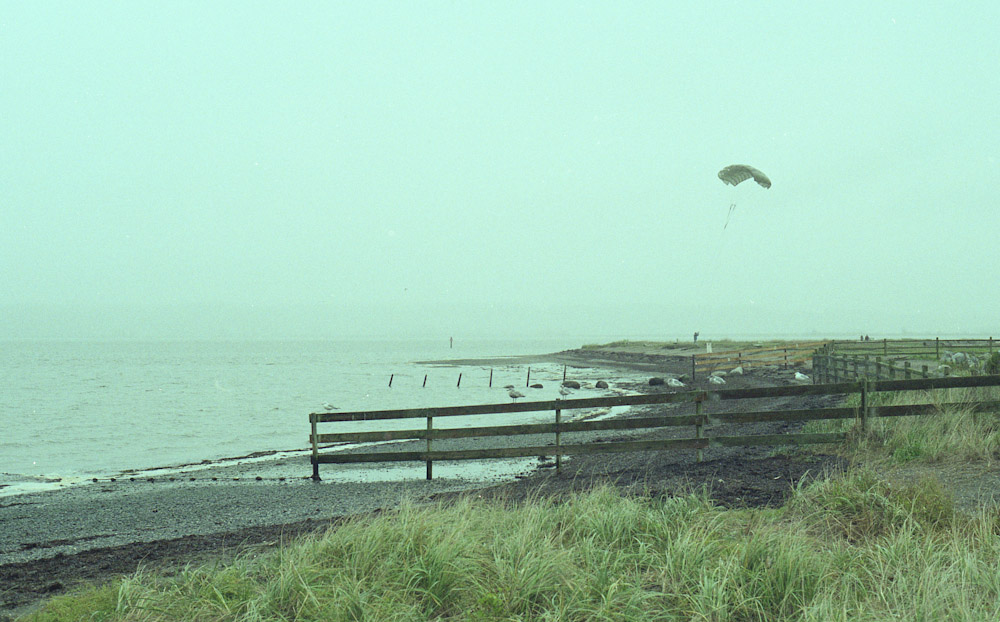
And here is the image that resulted. I did have to wait for the man trying to fly the parachute to get it airborne again and luckily this seagull was the bravest of them all and didn’t fly off.
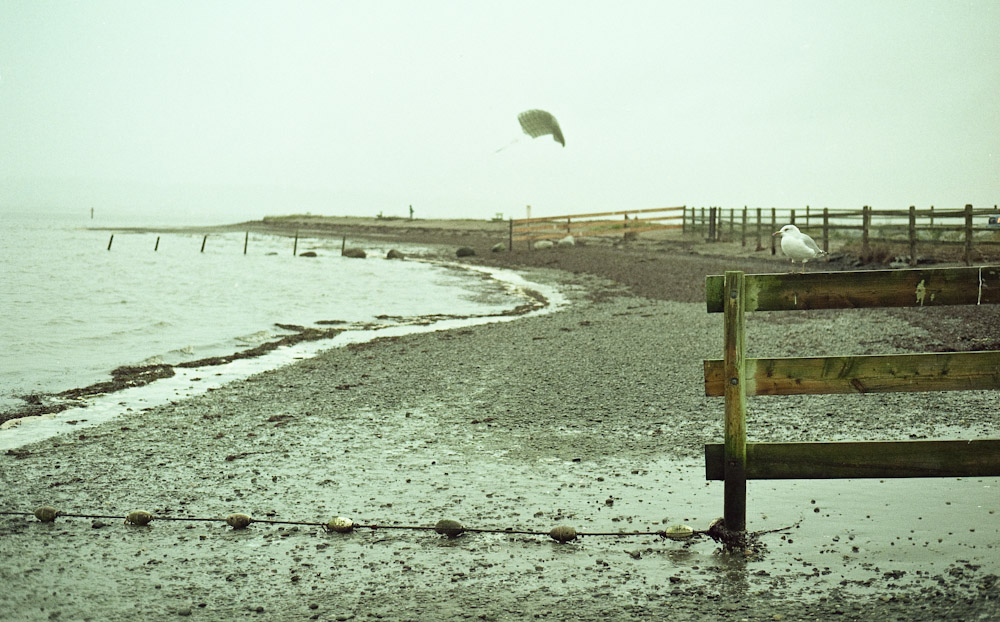
1 comment | tags: camera, composition, film, Minolta, X700 | posted in Composition, Photography, Uncategorized
Nov
2
2010
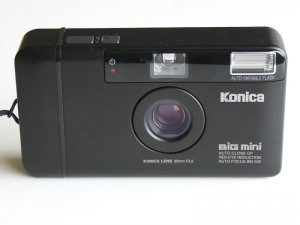
Everyone loves a good oxymoron right. The Big Mini, is a modern classic that is clearly misunderstood. The camera is small so that must be the mini, so what’s big? The pictures it creates? Not really, there the same size as any other 35mm camera. OK it’s just a catchy name for a decent camera. One nice feature is the +- 1.5 exposure compensation, which works great for backlit scenes, like the one of the trees with the sun behind. It’s also quite good at close distances focusing down to 35cm. Hmm 35mm lens,35mm film, f3.5, 35cm close focus, those stats almost exactly seem like they are accidentally on purpose.
Ok that’s enough, I’m almost done, how many oxymorons are in my post of vexing fun?
1 comment | tags: Big Mini, camera, film, Konica, Photography | posted in Cameras, Photography
Oct
27
2010
Recently Fuji announced a new digital compact camera, the X100, that has many styling cues from the past. It’s an attractive camera and has garnered a lot of attention from photographers. I’m interested in seeing this camera in person when it comes out in 2011 but until then I decided to give one of the Fujica’s I already own a spin. The Fujica 35 Auto M has an unusual 47mm f2.8 lens. Another interesting feature and perhaps one of the first cameras to have it is complete auto exposure with both shutter and aperture controlled by the camera, this can also be overridden making it a very versatile camera. If looking at the camera leaves you wondering about advancing the film and cocking the shutter, the lever is on the bottom and easily done with a thumb.

And now the sample images.
no comments | tags: camera, film, Fujica, Photography | posted in Cameras, Photography
Oct
5
2010

The Yashica Electro 35 rangefinders are wonderful cameras with an electronically controlled shutter and aperture priority. The f 1.7 lens allows plenty of light for low light shooting, however there is no shutter speed indicator beyond the basic over exposure and slow shutter warning. If you can live within those limitations it provides sharp well exposed images. I shot these images using Kodak professional plus-x. Kodak describes the film thus ” PLUS-X 125 Film offers a combination of sharpness and fine grain that makes it the ideal film for beautifully printable negatives in moderate-to-bright light.” I would agree and because it has been used for so many years it has a particular look that many people expect when they view a B&W image.
Here is a detail from one of the images.
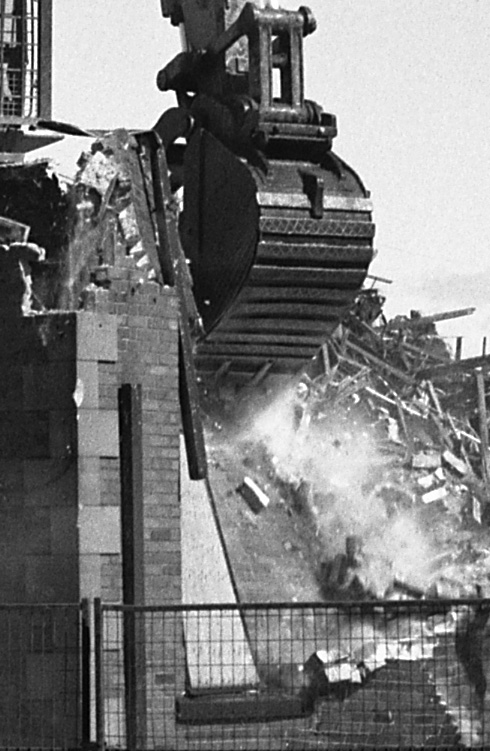
1 comment | tags: BW, camera, film, Photography, Yashica | posted in Cameras, Photography
























































